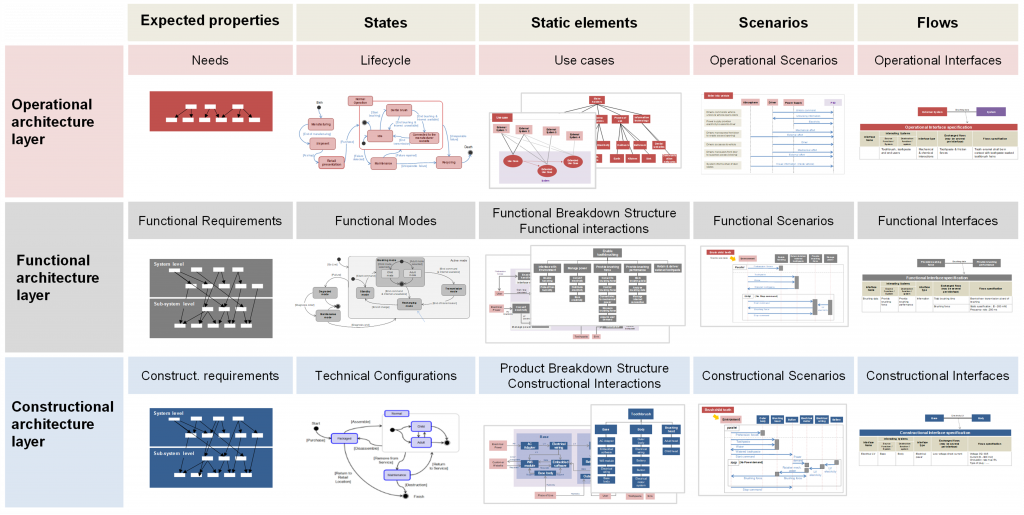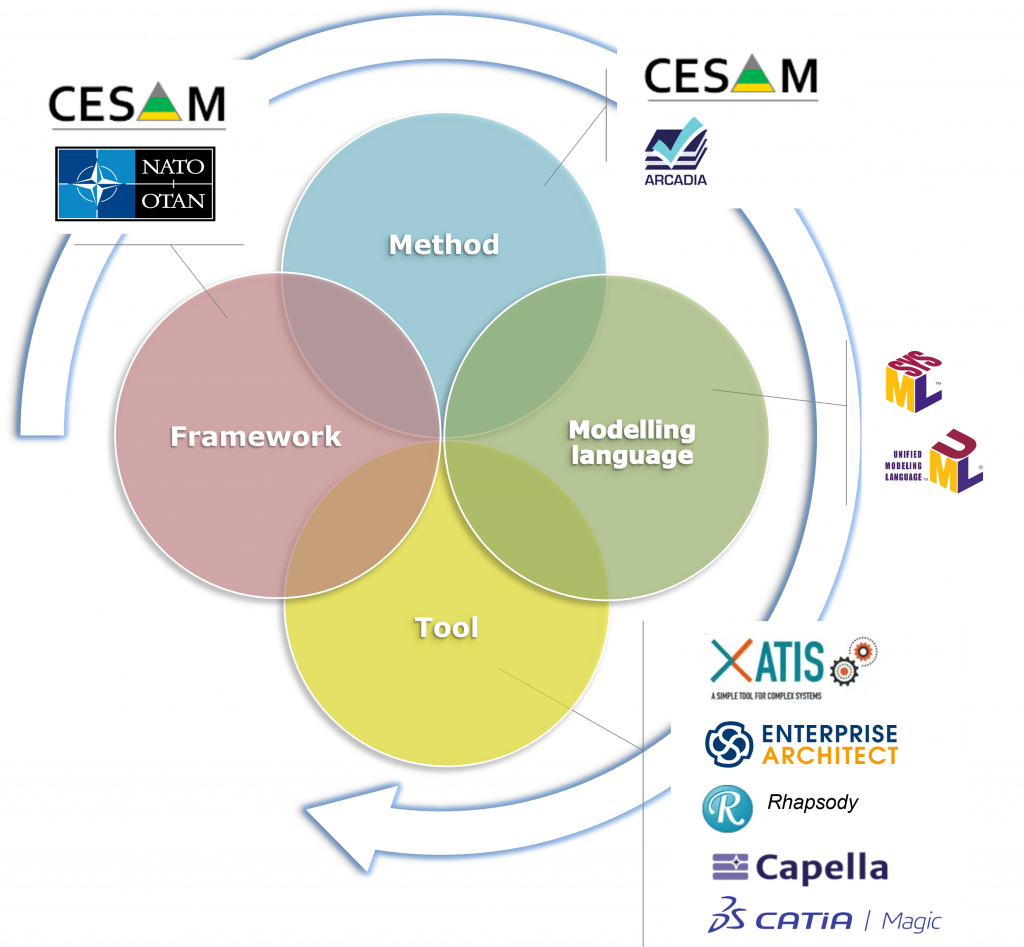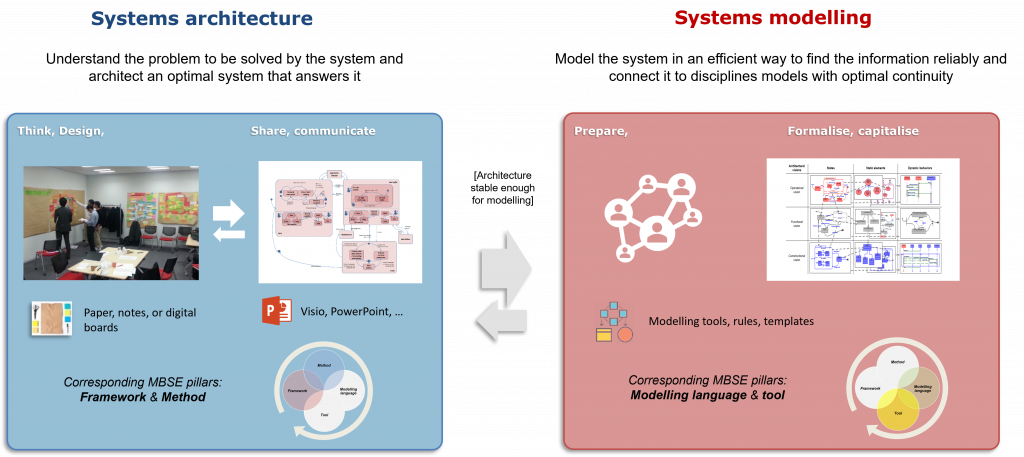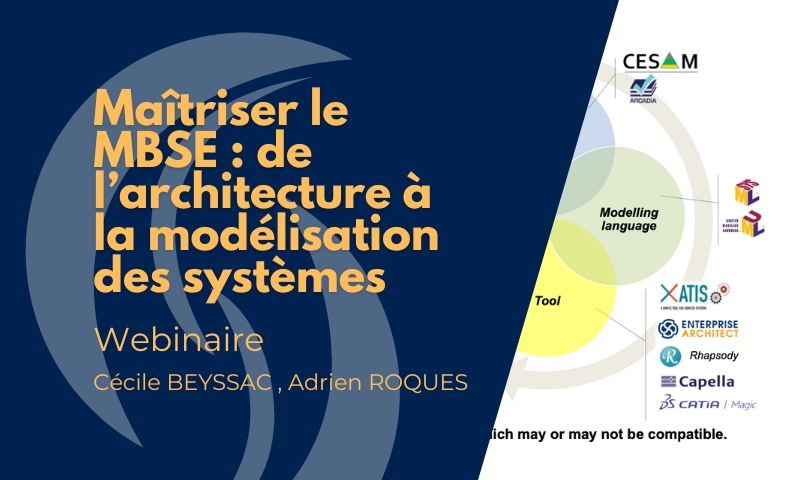MBSE
MODEL-BASED SYSTEMS ENGINEERING, A STRUCTURED APPROACH
Model-Based Systems Engineering (MBSE)
Model-based systems engineering is an increasingly popular topic in engineering. However, its definition remains a subject of varied interpretations. Nevertheless, it seems crucial to understand the different facets of this approach to ensure its effective deployment.
From understanding the fundamentals of MBSE to putting it into practice, we offer you an overview of the essential elements, in our opinion, for fully understanding this approach, coupled with some practical advice aimed at maximizing the benefits of MBSE and successfully implementing it.
| Understanding MBSE
MBSE is based on two key concepts: the concept of model (Model-Based) on the one hand and systems engineering on the other.
It is therefore an approach that favors the use of digital models, rather than textual documents, as the main means of information. The models, composed of different views, offer specific representations ideally organized according to an architectural framework. MBSE is therefore above all a structured and ultimately tooled approach (in the software sense). In the broader context of systems engineering, MBSE is therefore fully in line with the quest to formalize and master the design and validation of complex systems.
Without MBSE

each of these contains information about the system
With MBSE

from which documents are automatically generated
MBSE has multiple benefits. By gathering and linking all data related to a system’s design, from requirement to solution, it connects all engineering disciplines and facilitates impact analyses. Furthermore, the digitization of models promotes design consistency. In the current context of corporate digital transformation, MBSE is therefore taking a central role, as companies seek to establish digital continuity in their design processes.
| The 4 pillars of MBSE
The FRAMEWORK
The architectural framework, such as the CESAM framework, organizes the representations of the system into several views (operational, functional and organic for example).
The LANGUAGE
The modeling language (such as UML, CML, BPMN, etc.) constitutes the third pillar, allowing the elements of the system to be formally coded.

The METHOD
It guides the development and use of framework views and determines the representations needed to meet specific needs. CESAM has the particularity of being both a framework and a method, which represents an operational advantage.
The TOOL
The fourth pillar is the modeling tool used to formalize and store the models.
| Practical recommendations for a successful deployment
➤ Deploy MBSE to the extent necessary
When deploying MBSE, it is imperative to adhere to two distinct phases:
— The first, called “system architecture,” focuses on understanding the problem to be solved, building the system architecture, and formalizing ideas using simple representation tools. This crucial step is too often neglected in favor of modeling within the tool. Yet, its goal is to share information, challenge architectures, and converge toward a representation of the system.
— The second phase focuses on the actual creation of digital and interconnected models of the system. The goal is to translate the ideas written on paper into a language that can be read by the modeling tool, while maintaining an effective structure for the data model.

Neglecting either of these phases, or devoting too much time/effort to them in relation to the problem to be solved, compromises the effectiveness of the overall process. It will therefore be necessary to deploy the MBSE approach in these two phases to the extent necessary and in a manner adapted to each particular case.
➤ Understand the impacts of implementing MBSE
Too often, we see manufacturers investing in a modeling tool without further consideration. However, the cost associated with implementing MBSE activities can be high, and it’s not limited (far from it) to the purchase of licenses. Only a cost-value assessment of such an approach across the company can enable an informed decision on whether and how to deploy the approach.
The deployment of MBSE is indeed a true small-scale business transformation in that it modifies several constituent elements within a given scope (the way systems engineering activities are conducted, collaboration methods, required skills, etc.).
It is therefore better to assess the company’s situation before and after the MBSE deployment, according to relevant maturity axes, in order to fully understand the initial situation, decide on the scope and extent of the deployment, and determine a realistic transformation path.

➤ Develop systems engineering skills above all
While modeling skills within the tool are essential to develop, too many manufacturers neglect developing their employees’ systems engineering skills by relying on “on-the-job” learning or relying on compensation through the seniority/experience of the people in charge. However, acquiring systems engineering skills is essential for:
— the systems engineer, in order to be efficient during the system architecture phase
— the modeler, who must thoroughly understand the challenges their modeling involves.

➤ Cross-functional technical skills that enable a comprehensive understanding of technical challenges.
➤ Methodological skills in systems engineering to master models, their relationships, and the level of detail required to resolve the issue at hand.
➤ Interpersonal/human skills to facilitate stakeholder convergence and maintain the necessary open-mindedness without losing focus on customer satisfaction.
||||| Resources

DOCUMENT [EN]
Mastering MBSE: from architecture to systems modeling
During this webinar, Cécile BEYSSAC (Academy Director – Principal Systems Architect) and Adrien ROQUES (Technical Director – Expert Systems Architect) share CESAMES’ perspective on this practice, the fundamentals of deployment, the relationship between system architecture and modeling tools, and the benefits of adopting this approach when designing complex products.
They also describe certain architectural frameworks and their integration with various modeling tools on the market (XATIS, Capella, Enterprise Architect, MagicDraw, Rhapsody, etc.). Finally, they discuss the benefits and pitfalls of this adoption observed by many customers.
The original webinar is in French, but you will find the slides in English to download below.
